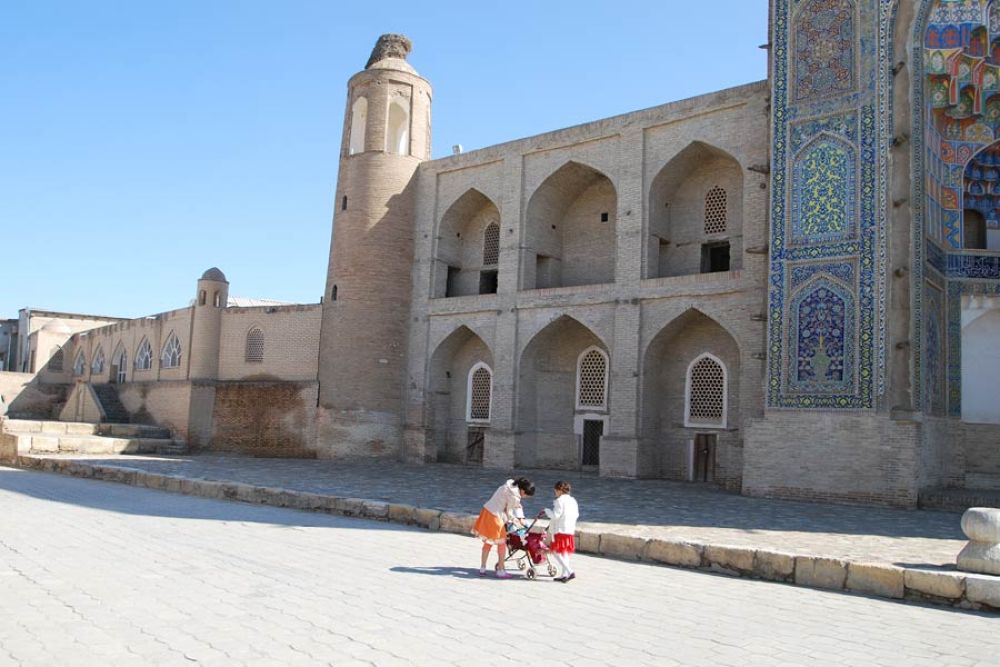The Abdulaziz Khan Madrasah is a historical madrasah in Bukhara, Uzbekistan, that stands as an epitome of architectural splendor dating back to the 17th century. Constructed in 1652 under the rule of Abdulaziz Khan, the structure showcases the high point of Bukharan architectural decor. This madrasah is famous for its intricate tile work, including majolica and mosaic faience, which exhibit a glorious fusion of blue, white, and green hues. The facade is adorned with elaborate calligraphic bands, foliated designs, and geometrical patterns that are bound to captivate any viewer. The interior features an iwan (portal) that leads into a marble-paved courtyard surrounded by dormitory cells, where students of theology and science once resided. The madrasah's ornate prayer hall and lecture rooms reflect the deep scholarly tradition that was its cornerstone. Adjacent to the Ulugh Beg Madrasah, Abdulaziz Khan Madrasah adds to the scholarly milieu of Bukhara, once a major center of Islamic learning. It is part of the historic center of Bukhara, which is a UNESCO World Heritage Site, further emphasizing its cultural and historical significance.

